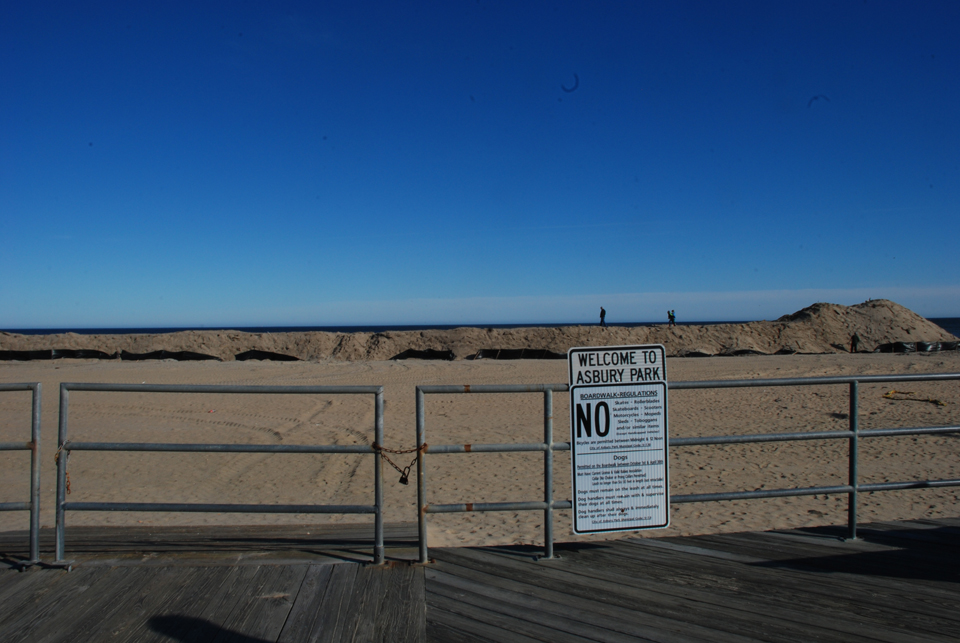Maggie Ollove: Sitting around the table were 15 well-intentioned people. My outsider group came to this little city on the shore to offer the resources needed to host a public event about resilience that would coincide with the launch of post-Hurricane Sandy projects. Looking across at me were representatives of several organizations and people with a mix of intentions and hopes for this project. But they shared something undeniable: everyone at the table lived and worked on the eastern side of town. The west side of town, the side that fell across the train tracks was completely unrepresented.
A few days later, my team and I walked into a church on the west side to attend a very crowded community meeting organized by local pastors. Sitting in the pews, we listened to this group of neighbors introduce themselves one by one and identify themselves as concerned citizens. Concerned for the gun violence, the gangs, the drug trade, and the divide between east and west. The momentum and want to unite the east and west was obvious at both meetings, but still the two sides held two meetings with overlapping goals but little cross-communication.
Public outreach and community engagement projects trying to engage many people can become inherently problematic. Louder, more persistent voices can easily drown out the quieter, the inclinations of the organizers can too strongly influence the final outcome, or aligning with one group can distance another. For many reasons, community engagement is tricky, yet vital to the success of many projects. This sometimes results in the direction of a project to be determined solely by those with the inclination, time, or patience to attend meetings, and those who do not or cannot left out.
However, by leveraging the breadth of technology and design, traditional notions of public outreach can be unlearned and rebuilt so unheard voices are engaged in meaningful, long-term ways. People are accessing information at unprecedented rates. More than ever, an active constituency is online and willing to engage with and explore new platforms and formats. This provides great opportunity and potential to amplify online platforms and tools to create accessible, inclusive, and transparent feedback mechanisms that engage meaningful dialogue.
A recent article in the Washington Post opinion section bemoaned President Obama’s inability to turn the giant youth following he had built during his campaign into a more engaged citizenry in his time in office. The author also condemns the millennial generation for its ‘inability to remain attached to a cause. While this may be so, millenials repeatedly prove there is potential to engaged them both online (Facebook, instagram, twitter) and off, (Occupy Wall Street, Sandy recovery) even if only temporarily. Yet, why was Obama (among others) not able to continue this excitement?
Form letters and on-line petitions are tools translated from a pre-internet age, with little criticality given to how to leverage the possibility for open-source data, geo-located mapping systems, and social networking sites. Using these tools and platforms to re-design our understanding of community engagement can create outreach that more directly and specifically speaks to individuals or sub-groups (such as pro-Obama millenials). And this has the possibility to not only improve infrastructure and services based on more informed feedback, but also create a loyal, long-term constituency. With internet access to an increased number of people a reality for a majority of people, we can now dive deeper to ask questions such as, ‘how might we develop a platform that strives to engage senior citizens in designing public parks to take accessibility into account?,’ ‘what are the biases and assumptions we’ve built into our platforms and how can they be questioned/leveraged?’ or ‘how might we track the progress of different community-based groups with overlapping missions, so they can work together and not separately?’ Rigorous and nuanced questions, such as these, can help transform digital outreach from more accessible to more meaningful. MO
Interesting websites:
Source: Maggie Ollove
Source: Maggie Ollove


